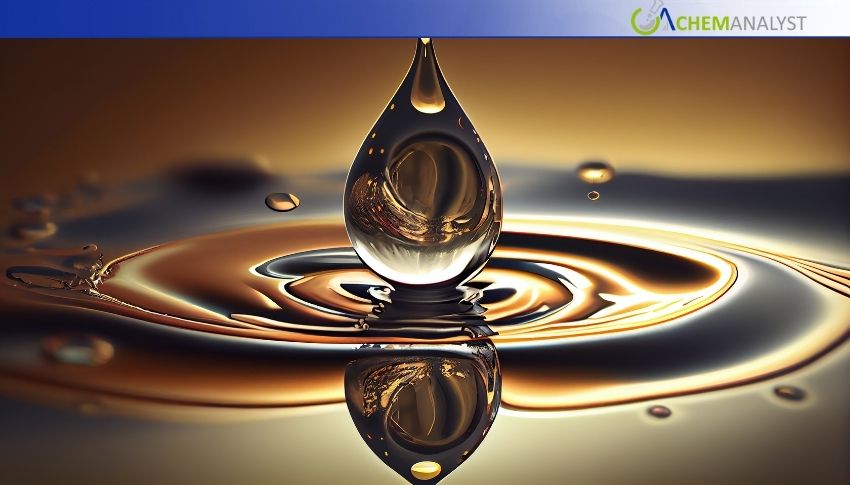Welcome To ChemAnalyst

The production process of diesel fuel primarily involves refining crude oil through a series of complex steps at petroleum refineries. Initially, crude oil undergoes atmospheric distillation, where it's heated and separated into different fractions based on boiling points. Diesel is typically obtained from the middle distillate fraction. To enhance fuel quality, the extracted diesel is further treated via hydrotreating, where impurities like sulfur, nitrogen, and metals are removed, ensuring compliance with emission standards. In some cases, cracking units are used to convert heavier hydrocarbons into lighter diesel components, increasing yield. The final product is then blended and tested to meet specific performance and environmental standards before being distributed for commercial and industrial use.
I. Introduction
Diesel is one of the most important fuels used today. It powers trucks, buses, ships, trains, and many machines in factories and farms. Because it's used so widely, it’s important to understand how diesel is made. Knowing the production process helps us see where costs come from, how it affects the environment, and how we can improve it in the future. Diesel production involves many steps and materials, and it can have both economic and environmental impacts. As the world moves toward cleaner energy, learning how diesel is made can help industries and governments make better choices for the future.
II. Overview of the Production Process
Diesel is made in oil refineries, usually through a continuous process that runs all the time. A smaller number of refineries use batch processing, which works in smaller amounts and stops between batches.
The first step is distillation, where crude oil is heated and separated into different parts. Diesel is taken from the middle part of the oil, called the middle distillate. Next, the diesel goes through a process called hydrotreating, which removes harmful substances like sulfur. After that, blending and finishing steps improve its quality.
From one barrel of crude oil, about 20–25% can become diesel. Other useful products made during the process include gasoline, jet fuel, and heating oil. These by-products also help make the process more valuable and efficient.
III. Raw Materials and Input Requirements
The main raw material for making diesel is crude oil, which is pumped from underground or under the sea. Different types of crude oil give different amounts of diesel. Light, low-sulfur crude oil is better because it produces more diesel and is easier to clean.
Another important material is hydrogen, used to remove sulfur during processing. Special catalysts made from metals like nickel, molybdenum, or cobalt help speed up chemical reactions during production.
Sometimes, additives are also mixed into diesel to improve how it burns or to reduce pollution. All these materials need to be clean and available in large amounts to keep diesel production steady and efficient.
IV. Major Production Routes
There are different ways to make diesel. The most common method is distillation followed by hydrotreating. Another method is catalytic cracking, which breaks big oil molecules into smaller ones. A more advanced method, hydrocracking, uses high pressure and hydrogen to make better-quality diesel.
Different regions use different methods. For example, Europe uses more hydrocracking because diesel cars are more popular there. In countries with fewer resources, simpler methods like basic distillation are more common.
Cleaner options are also becoming popular. Green diesel is made from vegetable oils, animal fats, or used cooking oil. These can be turned into diesel using similar refinery equipment. Another method, called biomass-to-liquid (BTL), turns plant waste into diesel. These eco-friendly options help reduce emissions and support a circular economy.
V. Equipment and Technology Used
Diesel production needs big, strong equipment that can handle high heat and pressure. The main machines used are distillation towers, hydrotreaters, reactors, and heat exchangers. In the hydrotreating process, fixed-bed reactors are used to clean the diesel with hydrogen and catalysts.
Modern refineries use computer systems like DCS (Distributed Control Systems) and PLCs (Programmable Logic Controllers) to monitor and control the whole process safely.
New technologies are making diesel production more efficient. Some examples include recycling heat from one part of the process to use in another and using AI and sensors to make quick adjustments. These innovations help save energy and reduce costs while making diesel that meets quality and safety standards.
VI. Environmental and Safety Considerations
Making diesel can release harmful gases like carbon dioxide (CO2), sulfur dioxide (SO2), and nitrogen oxides (NO?). To reduce pollution, refineries use equipment like scrubbers and special burners to clean the air before it is released.
Diesel production also creates wastewater, sludge, and used catalysts. These wastes are treated using chemical or biological systems to make them safe. Many refineries have their own waste treatment plants and reuse water wherever possible.
Governments set strict rules to protect the environment and workers. In the U.S., the Environmental Protection Agency (EPA) makes rules about air and water pollution. In Europe, rules under the EU Emissions Trading System (ETS) help control greenhouse gases. Refineries also follow safety rules to prevent fires, explosions, and chemical spills, using alarms, training, and safety gear for workers.
VII. Conclusion and Future Innovations
Diesel is still widely used, but there’s a strong push to make it cleaner and more sustainable. Scientists and engineers are working on better catalysts, smarter reactors, and bio-based materials to make diesel with fewer emissions.
New fuels like green diesel from plant oils or synthetic diesel from waste materials are becoming more common. These can work in existing diesel engines but are better for the planet. Also, digital tools like AI and automation are helping refineries become more efficient.
In the future, the goal is to produce diesel that is both low-cost and low carbon, helping industries keep running while protecting the environment.
We use cookies to deliver the best possible experience on our website. To learn more, visit our Privacy Policy. By continuing to use this site or by closing this box, you consent to our use of cookies. More info.
